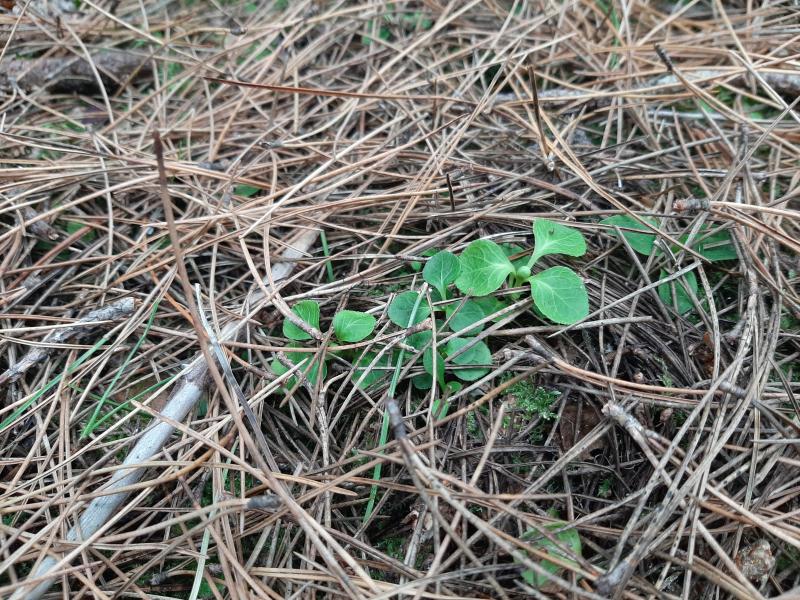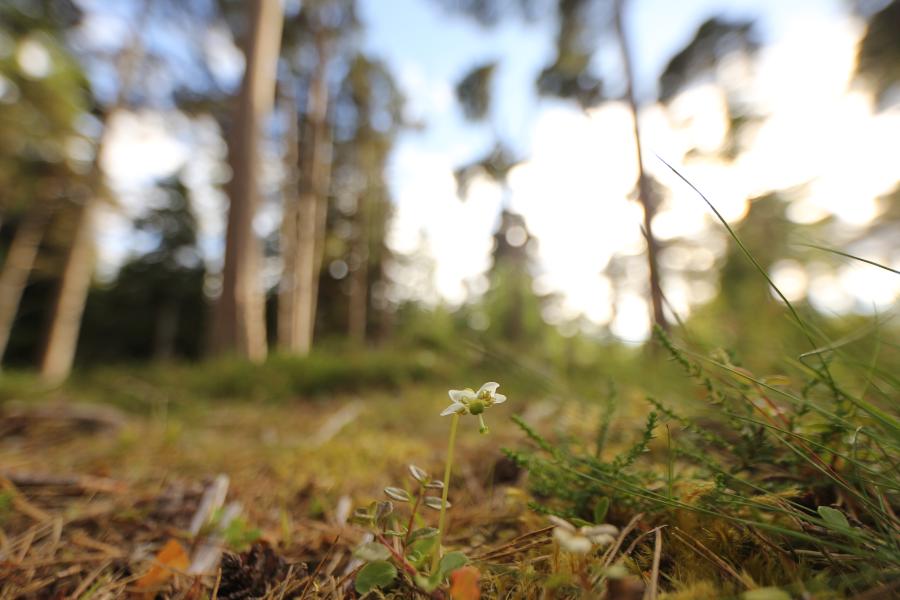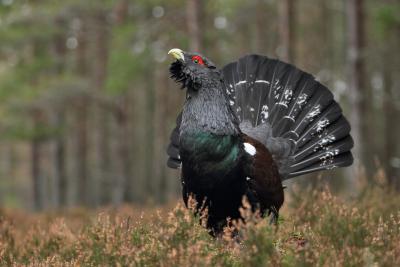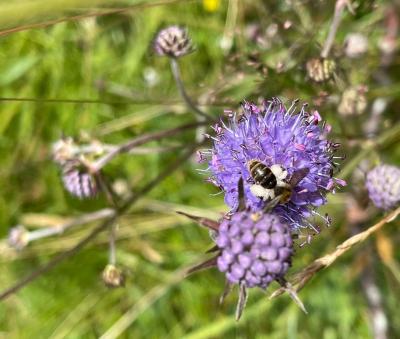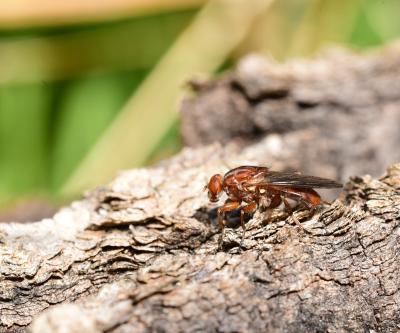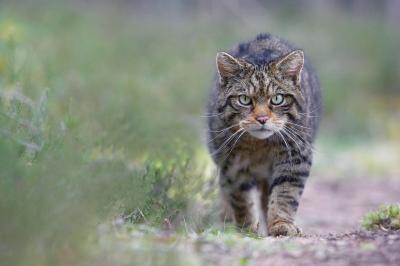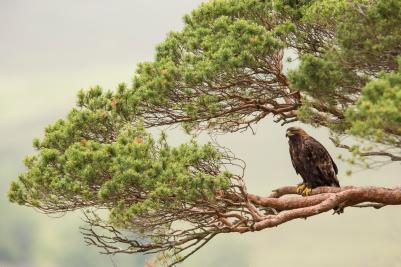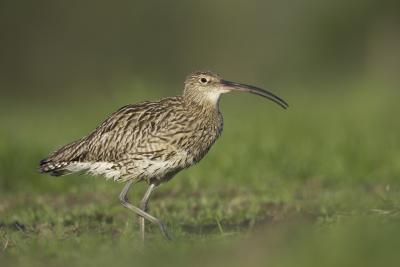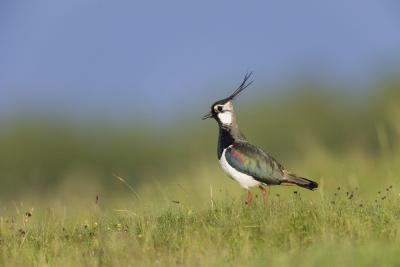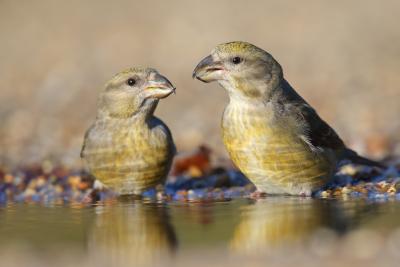One-flowered wintergreen
Moneses uniflora
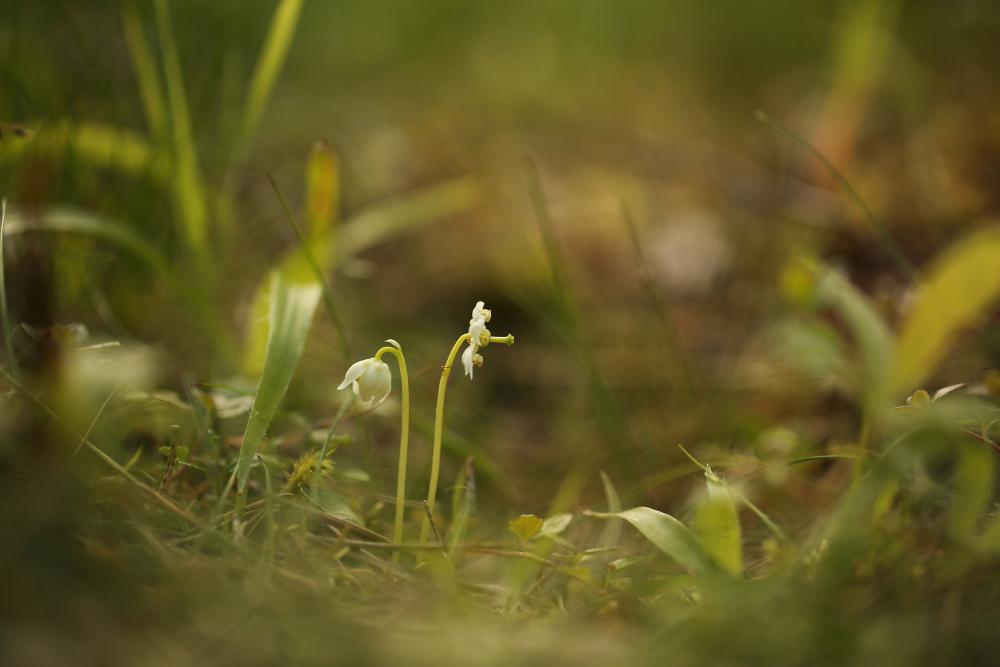
The one-flowered wintergreen is the only member of the Monesus genus (subfamily) but it closely resembles other wintergreen species in the Pyrola family. It grows in heather-dominated habitats or dry hollows dug out in pine woodlands.
Factsheet
Best time to spot: June - July
Population in park: 700 - 2500 rosettes, depending on the year
The one-flowered wintergreen produces a solitary white or pale green flower with petals that open extremely wide. It stands out from other wintergreen species, with each petal measuring just over half a centimetre wide.
Fully grown, the plant reaches five to 12cm tall and at the base of the stem are near-round green leaves. These are opposite, meaning they grow in pairs, but sometimes the leaves also grow in groups of three.
In theory, this plant blooms in a range of locations, including bog margins, mossy spruce copses, stream banks and moorland. However, in practice, the one-flowered wintergreen is extremely rare.
It grows in very few sites across the UK, just seven in fact, with two of those being in the Cairngorms National Park. This means 10% of the UK’s total population of the plant grows in this region, making it incredibly important to support its survival here.
One-flowered wintergreens were considered so beautiful in the 18th and 19th centuries that they were over-collected, leading to diminishing populations. Paired with more recent land use changes, this means the plant is now considered extremely vulnerable. In the UK, only half the population remains compared to 50 years ago.
Did you know?
The one-flowered wintergreen is the only member of the Monesus genus (subfamily) but it closely resembles other wintergreen species in the Pyrola family. It grows in heather-dominated habitats or dry hollows dug out in pine woodlands.
Factsheet
Best time to spot: June - July
Population in park: 700 - 2500 rosettes, depending on the year
The one-flowered wintergreen produces a solitary white or pale green flower with petals that open extremely wide. It stands out from other wintergreen species, with each petal measuring just over half a centimetre wide.
Fully grown, the plant reaches five to 12cm tall and at the base of the stem are near-round green leaves. These are opposite, meaning they grow in pairs, but sometimes the leaves also grow in groups of three.
In theory, this plant blooms in a range of locations, including bog margins, mossy spruce copses, stream banks and moorland. However, in practice, the one-flowered wintergreen is extremely rare.
It grows in very few sites across the UK, just seven in fact, with two of those being in the Cairngorms National Park. This means 10% of the UK’s total population of the plant grows in this region, making it incredibly important to support its survival here.
One-flowered wintergreens were considered so beautiful in the 18th and 19th centuries that they were over-collected, leading to diminishing populations. Paired with more recent land use changes, this means the plant is now considered extremely vulnerable. In the UK, only half the population remains compared to 50 years ago.
Did you know?
In 2023, the UK’s first conservation project for the one-flowered wintergreen took place in the National Park. As part of the Cairngorms Rare Plants and Wild Connections project led by Plantlife Scotland, species from two sites, Roseisle Forest in Moray and Old Grantown Wood, were relocated to the RSPB Abernethy nature reserve.
Amazingly, the plants achieved a 70% survival rate - with 16 new flower heads observed in summer 2024 - giving hope that genetic mixing could help repopulate the species to its former glory. Part of the project’s success could be linked to ground conditions, as trials of cattle grazing and the removal of invasive species in woodland generated a rapid one-flowered wintergreen recovery. This suggests that this plant might prefer heavily disturbed woodland soils.
While most plants acquire energy via photosynthesis (ie absorbing energy from the sun and converting it to help them grow), the one-flowered wintergreen is ‘partial-mycoheterotrophic’. This means it takes sugars and other essential minerals from fungus networks found in woodland soils. This is common in plants that grow in low-light environments, where photosynthesis is more challenging.
The one-flowered wintergreen can reproduce through insect pollination, but the solitary nature of the flower makes this a rare occurrence. It generally grows its population through vegetation spread instead.





